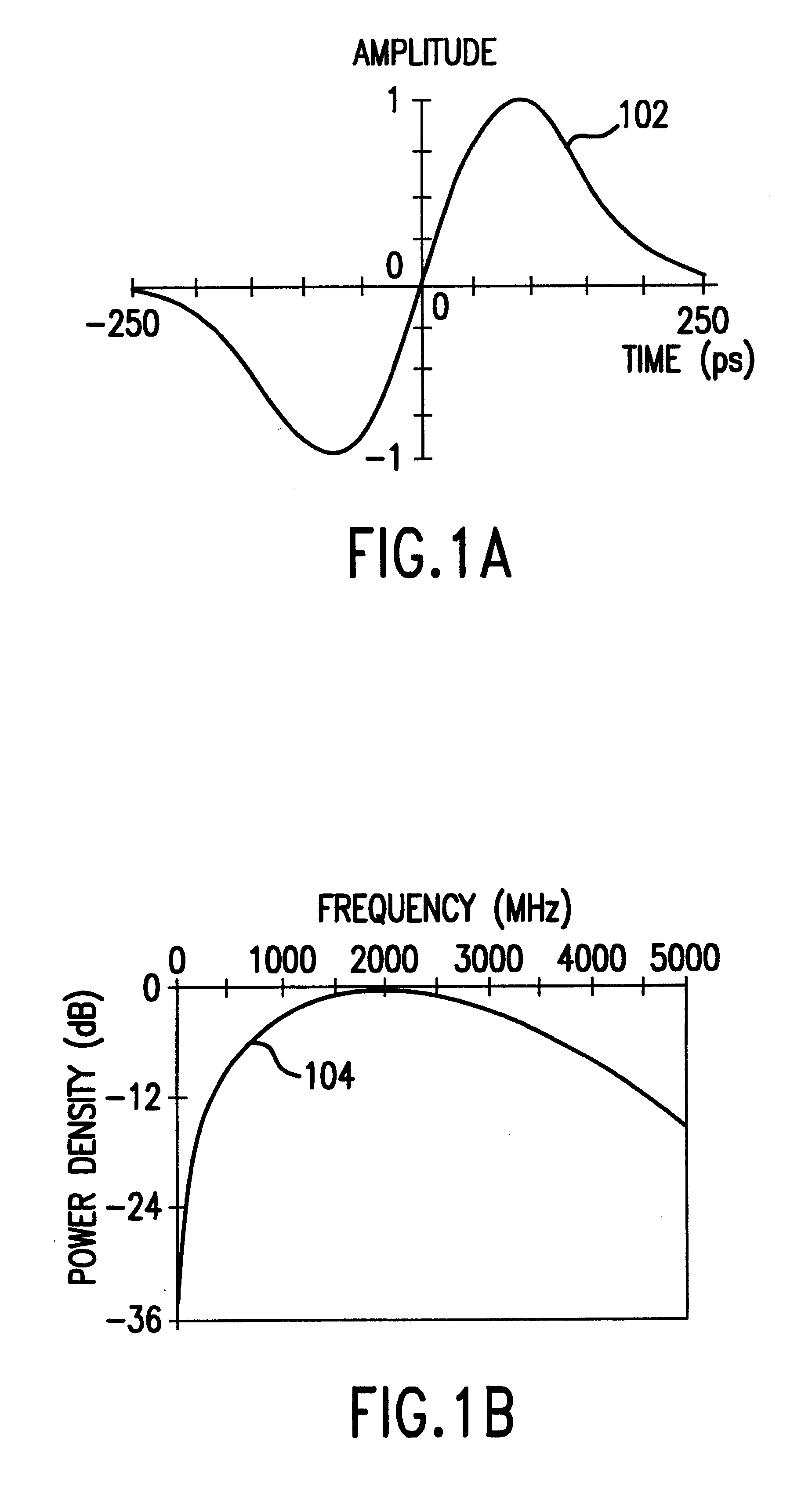Semi-coaxial horn antenna
a horn antenna and coaxial technology, applied in the field of horn antennas, can solve the problems of short frequency spectrum, and inability to meet the needs of uwb antennas with wide bandwidth, and achieve the effect of avoiding the occurrence of uwb antennas with large bandwidth, and avoiding the occurrence of uwb antenna
- Summary
- Abstract
- Description
- Claims
- Application Information
AI Technical Summary
Problems solved by technology
Method used
Image
Examples
Embodiment Construction
1. Impulse Radio Basics
This section is directed to technology basics and provides the reader with an introduction to impulse radio concepts, as well as other relevant aspects of communications theory. This section includes subsections relating to waveforms, pulse trains, coding for energy smoothing and channelization, modulation, reception and demodulation, interference resistance, processing gain, capacity, multipath and propagation, distance measurement, and qualitative and quantitative characteristics of these concepts. It should be understood that this section is provided to assist the reader with understanding the present invention, and should not be used to limit the scope of the present invention.
Impulse radio communications was first fully described in a series of patents, including U.S. Pat. Nos. 4,641,317 (issued Feb. 3, 1987), 4,813,057 (issued Mar. 14, 1989), 4,979,186 (issued Dec. 18, 1990) and 5,363,108 (issued Nov. 8,1994) to Larry W. Fullerton. A second generation of...
PUM
 Login to View More
Login to View More Abstract
Description
Claims
Application Information
 Login to View More
Login to View More - R&D
- Intellectual Property
- Life Sciences
- Materials
- Tech Scout
- Unparalleled Data Quality
- Higher Quality Content
- 60% Fewer Hallucinations
Browse by: Latest US Patents, China's latest patents, Technical Efficacy Thesaurus, Application Domain, Technology Topic, Popular Technical Reports.
© 2025 PatSnap. All rights reserved.Legal|Privacy policy|Modern Slavery Act Transparency Statement|Sitemap|About US| Contact US: help@patsnap.com



